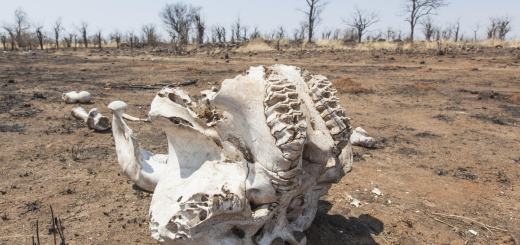The M23 ‘version 2’ – Local stakes, motivations, perceptions, and impacts
Sinds 2021 is het oosten van Congo (DRC) opnieuw het slachtoffer van de M23-rebellenbeweging. De M23, die in 2013 zou zijn verslagen, nam in 2021 de wapens weer op en had in 2022 opnieuw uitgestrekte gebieden in het zuidoosten van de provincie Noord-Kivu in handen. De situatie is sindsdien alleen maar erger geworden met honderdduizenden vluchtelingen als gevolg. De ellende voor de gewone bevolking in deze strategische grensregio is niet meer te overzien. Toch is er meer aan de hand dan alleen de hand-en-spandiensten van buurland Rwanda bij de opmars van deze rebellengroep. IPIS publiceerde begin april een nieuw rapport over M23 ‘versie 2’.
The M23 was originally created in 2012 following a mutiny within the Congolese army (FARDC) by former rebels that had been integrated. In 2021, the M23 relied on demands similar to those at the time of its creation in 2012.
It actually accuses the Congolese government of failing to respect the 2013 Nairobi Declarations, which were signed after the end of the previous uprising. In addition, however, the M23 made other demands, such as the protection of the Tutsi community and the reform of the Congolese army.
Although the support of the Rwandan army is a crucial factor to explain the M23’s resurgence, the movement is first and foremost motivated by its own interests and objectives.
This study sheds light on the local stakes and impacts of the M23 crisis, through the eyes of local actors in North Kivu. It is the result of interviews conducted by ASSODIP with 57 people in the province of North Kivu.
Importance of both the historical and regional context
The study explains the regional context of the current security crisis, and in particular the impact of tensions related to economic, political, security and humanitarian issues.
Geopolitical competition exists between some of DRC’s neighboring countries, for example for access to mineral export routes. This competition gives the Congolese people the impression that their country is being exploited by neighbors who are enriching themselves at their expense.

Additionally, some neighboring countries, and Rwanda in particular, have been accused of supporting the M23. This support recalled the fear of ‘balkanization’, which is the widely held belief in DRC that the international community, and Rwanda in particular, are trying to divide the DRC.

Next, the study goes back to the historical roots of conflict in the ‘Petit Nord’ (composed of the territoires of Nyiragongo, Rutshuru, Masisi and Walikale), in order to better understand the M23’s motivations.
It underlines the importance of issues dating back to the colonial period and that immediately following independence, and of tensions pitting the Rwandophone communities (Hutus, and especially Tutsis) against the province’s other ethnic groups.
Different maps of the study
“This [indigenous-allochthonous] divide, the shadow of the colonial powers, and the behavior of customary- and modern authorities have been […] decisive in regions where many immigrants arrived“.



An official listing the causes of conflict in North Kivu
1. Access to land
The Congolese land law creates confusion, as it recognizes both written law and the role of customary authorities in land management. Additionally, the government’s difficulties to implement the law, make it difficult to guarantee land property rights. This fuels existing tensions over access to land, which often involve discrimination against communities considered ‘non-indigenous’.
Interviewees perceive the infiltration and control of power at the local level as a key issue, as local chiefs guarantee access to land.
Many local actors see the current war as an attempt by M23 to overtake local power, in order to secure control over land, and in particular the protection of land acquired by the ‘Tutsi’ community.
2. Sources of funding
In order to counter the idea that the M23’s resurgence can be explained by a desire to gain access to minerals, the study explores the armed group’s sources of funding.
In addition to external support from the Rwandan army, the M23 uses several revenue generating activities within North Kivu, including household taxes.


Household taxes: illegal taxation on the movement of people and goods, and on the wider local economy, through roadblocks. Taxes levied from trucks and motorcycles on the Sake-Kilolirwe-Kitshanga road (see picture of receipt), for example, could amount to 69,500 dollar per month for the M23.
Forced labor (for example to harvest agricultural products): income from the illegal exploitation of natural resources (such as timber and charcoal trafficking).

Serious long-term security consequences
This crisis has revived a plethora of local armed groups in North Kivu, as they oppose the M23. These are old and new tribal-ethnic groups who claim to be fighting against any foreign occupation.
These armed groups have unified under the name of ‘Wazalendo’, meaning ‘patriots’, but are in reality a highly fragmented amalgamation of pre-existing Nyatura and Maï-Maï groups.

The M23 offensive seems to be used as a pretext to intensify their extortion of civilians and interference in the local economy and governance. Instead of curbing the rise of these armed groups, the DRC government has rather legitimized the Wazalendo phenomenon, notably through a law that establishes an ‘army reserve’.
These trends have led to a ‘militarization of the local governance context’, which risks jeopardizing future disarmament efforts and pacification in eastern DRC, beyond the current crisis.

For further information, please contact Ken Matthysen
IPIS, Antwerp, April 4, 2024
Author(s): ASSODIP, DIIS, IPIS
Democratic Republic of the Congo
Om het volledige IPIS-rapport te downloaden:

Lees verder (inhoud april 2024)



